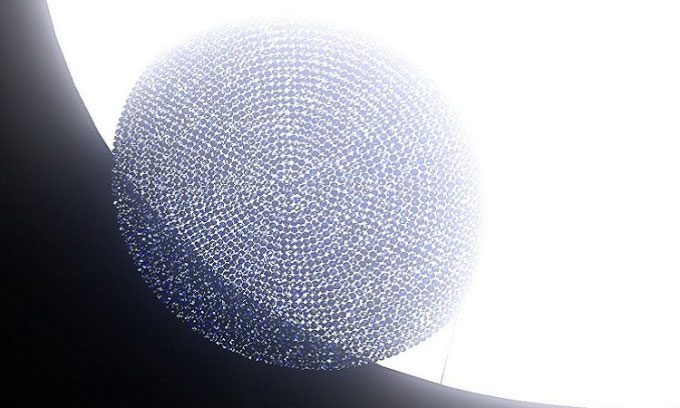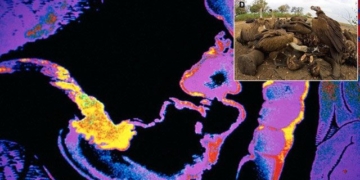The “floating bubbles” cluster above Earth reflecting sunlight could help reverse global warming.
Droughts, extreme heat waves, and large wildfires are currently affecting the entire globe. Many cities on our planet have broken temperature records this summer. Despite international efforts to combat global warming, it may be that Earth has reached a point of no return.
What would happen if we fail to keep the temperature increase below +2°C? Scientists are exploring “last chance” solutions aimed at mitigating damage or even reversing climate change.
Inspired by an idea proposed by astronomer Robert Angel, a team of researchers from the Massachusetts Institute of Technology (MIT) in the United States is currently investigating a concept for a solar shield that would serve as a shield to reduce the amount of radiation hitting our planet.
The Space Bubbles research project, led by architect Carlo Ratti along with other researchers at MIT, proposes creating a “raft” composed of multiple frozen bubbles at the Lagrange Point L1, located between Earth and the Sun. These bubbles would be made from thin-film materials and produced in space. When connected, they would cover an area equivalent to that of Brazil (8.5 million km2).

When combined, the bubble raft will cover an area the size of Brazil. (Photo: MIT)
Space Bubbles is a variation of the idea of cooling Earth using a solar shield, which works by blocking a portion of the radiation from the star, thereby alleviating the impacts of global warming. However, the main difference is that the solar shield in space poses no risk to Earth’s biosphere. Projects implemented in the Earth’s stratosphere come with this risk.
The MIT research team emphasizes that Space Bubbles is designed to support efforts to mitigate the current trends of climate change. “Geoengineering is our only option,” Ratti, head of MIT’s Senseable City Lab, stated. “However, geoengineering proposals are all on Earth, posing enormous risks to ecosystems. A solution in space would be safer. For instance, if we deflect 1.8% of solar radiation before it reaches Earth, we could completely reverse global warming.”
Another advantage of this type of solar shield is that the bubbles can deflate and be retrieved from their position. The spheres are made from materials such as silicon, transported into space in a molten form or as ion-infused liquids reinforced with graphene. The MIT team successfully conducted a preliminary experiment by inflating the sphere’s shell under space conditions. They believe this could be one of the most effective thin-film structures for redirecting solar radiation.
The Space Bubbles research project was developed from the ideas of scientist James Early, who first proposed deploying objects to deflect radiation at the Lagrange Point, and astronomer Roger Angel, who suggested the design of the bubble raft. The interdisciplinary research team hopes to demonstrate the feasibility of the project through further experiments and analyses. In addition to materials, the research will explore transportation options from Earth, the positioning and stability of the bubble raft, cost-effectiveness, maintenance, and impacts on climate and ecosystems.





















































